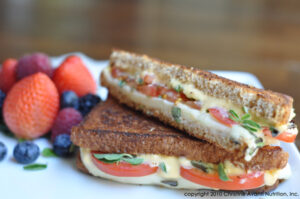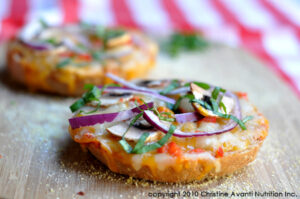Food is not just an important aspect of our everyday life; we must eat in order to survive. This need to eat influences so many choices we make every day. I don’t think most of us realize that food is one of the most psychologically driven things we do multiple times a day; that psychologically driven choice is affecting more aspects of your life than you may think.
 There are many factors that influence our eating behaviors. Some of them are cultural, social, and economic status. This month I am going to focus on the Psychology of Eating and another factor that influences our eating behaviors – our emotions. Some people use food as a copy mechanism to deal with feelings like stress and anxiety, or even to celebrate feelings of joy and happiness. The problem with this, is while eating to ease these problems in the short term, it often leads to further problems in the long term. It turns out that what we eat is determined by how we feel, but what we feel is partially determined by what we eat. And so, there is this vicious cycle that is produced by ‘eating our feelings.’
There are many factors that influence our eating behaviors. Some of them are cultural, social, and economic status. This month I am going to focus on the Psychology of Eating and another factor that influences our eating behaviors – our emotions. Some people use food as a copy mechanism to deal with feelings like stress and anxiety, or even to celebrate feelings of joy and happiness. The problem with this, is while eating to ease these problems in the short term, it often leads to further problems in the long term. It turns out that what we eat is determined by how we feel, but what we feel is partially determined by what we eat. And so, there is this vicious cycle that is produced by ‘eating our feelings.’
When we eat foods high in nutrition, where is the reward? Well, none (short term), unless you absolutely love the taste of raw kale and broccoli (which I personally do). Most of Americans are living fast-track lives where they are consuming processed junk foods on a regular basis and this affects our brains, and our emotions very differently than those raw vegetables.
The reason why we love junk food is “when we eat junk foods the reward circuits within our brains activate and release the chemical dopamine. Our brains can become overwhelmed by the pleasure from these rewarding foods and in response, the brain adapts and makes more receptors for dopamine. This means a greater amount of junk food is needed to get the same “kick”, making us eat more, in the same way that an addict develops a tolerance to drugs.
So, our brains are hardwired to seek out and want rewarding foods, making us crave and desire sweet and fatty foods.”[www.rmit.edu.au]
The problem is that because we are stressed, we are turning to foods to cope with stress. And now as a society, we are stressed all the time. Most people have formed a very unhealthy relationship with food. As a result, we have become unhealthier, and we no longer know the different between our cravings and hunger. Aside from the addictive properties of junk food, people who eat lots of ultra-processed foods are more likely to develop heart disease and to die sooner than those who stick with foods in their original form.
What is ‘Processed Food?’
 You may be starting to worry and now wonder if the foods you’re eating are processed. That’s a great question! What exactly is processed food? Most foods have been processed in some way or another unless you’re eating it right out of your garden. Processed foods are those that have undergone any level of alterations once they’re plucked from nature—commonly freezing, canning, baking, or drying. “It’s food that’s been changed or made a bit different from its natural form,” says the Academy of Nutrition and Dietetics.
You may be starting to worry and now wonder if the foods you’re eating are processed. That’s a great question! What exactly is processed food? Most foods have been processed in some way or another unless you’re eating it right out of your garden. Processed foods are those that have undergone any level of alterations once they’re plucked from nature—commonly freezing, canning, baking, or drying. “It’s food that’s been changed or made a bit different from its natural form,” says the Academy of Nutrition and Dietetics.
Not all “processing” is bad for you. Iron and minerals are added to grains and cereals and technically that is processed. You want to steer clear from highly-processed foods like sodas, cookies, candy – and foods that have too many of the wrong ingredients like white flours, white sugar; things that don’t exist in nature and are made in a factory.
How Much Processed Food is Too Much?
The more whole and natural a food is, the better it is for you because it has more fiber, vitamins, and minerals, along with a better balance of macronutrients. There really isn’t a definitive number of processed foods that is safe or unsafe to eat, but here are some signs that you may be eating too much processed foods:
You’re Thirsty All the Time
Processed foods are nearly always higher in sodium to help prolong their shelf life. One side effect that may be noticeable to you by eating too much of these foods is thirst. Remember, sodium draws water out of your tissues, making the need to drink more water to stay hydrated necessary for your body to maintain balance.
You’re Bloated
Another sure-fire way to tell you are eating too many processed foods is that you are often bloated. The increased sodium in these foods makes water collect in different areas of the body, like the belly. You can add some potassium-rich foods like bananas or sweet potatoes to help balance the sodium along with cutting down the processed foods.
You Have Recurring Headaches
Salty foods actually pull water from your body’s cells, making you dehydrated. A very common symptom of dehydration is regular headaches. Cutting out processed foods may eliminate your headaches – and increasing your water intake will help!
You are Tired and Feeling Down
 The simple sugars in processed foods cause unstable energy levels throughout the day. Your blood sugar will spike and then crash, so you can go through periods of tiredness throughout the day. That unstable energy flow can also cause mood swings, which also can leave you feeling a bit down and depressed. Eating more whole foods and balanced meals will keep your blood sugar stable and leave you feeling more stable in your moods and keep your blood sugar levels stable.
The simple sugars in processed foods cause unstable energy levels throughout the day. Your blood sugar will spike and then crash, so you can go through periods of tiredness throughout the day. That unstable energy flow can also cause mood swings, which also can leave you feeling a bit down and depressed. Eating more whole foods and balanced meals will keep your blood sugar stable and leave you feeling more stable in your moods and keep your blood sugar levels stable.
There are other signs that you have consumed too much processed food. Over time, it can take a major toll on your health, increasing your cholesterol, thinning your hair, causing skin outbreaks, weight gain, and even affecting your heart, glucose levels and teeth. You can start changing your habits by starting slow:
- Eat a variety of nutritious foods every day
- Minimize eating out to once a week
- Increase your water intake!
- Plan your meals a week in advance and use a grocery list to shop for healthy foods
- Learn to read Nutrition Facts Labels
- Avoid distractions while eating and learn to enjoy your food
- Consult a Certified Nutritionist or Registered Dietitian Nutritionist (RDN)
With nutrition, it is all about the ingredients. If you have a favorite dish but there is an imbalance of carbs to protein, or includes trans fats, or other ingredients that aren’t good for the body and soul, replace them! There are suitable replacements for everything. Craving those greasy tortilla chips? Grab some organic corn tortillas, cut them into triangles, spray them with a little avocado or olive oil and bake them! Instant substitution. Craving an ooey-gooey Grilled Cheese? Try my Guiltless Grilled Cheese with Roma Tomatoes and Fresh Organic Oregano. You’ll love this healthier version:
 Ingredients
Ingredients
- 2 slices large whole wheat bread
- 1 1/2 slices Swiss cheese (or plant-based Swiss cheese)
- 1 1/2 slices cheddar cheese (or plant-based cheddar cheese)
- 1 small organic Roma tomato, sliced
- 1/4 teaspoon fresh organic oregano, finely chopped
- olive oil spray
Directions
- Place the Swiss cheese (or plant-based Swiss cheese) on one side of a slice of bread. Then place sliced tomato on top and sprinkle with oregano.
- Follow with the Cheddar cheese (or plant-based cheddar cheese) and second piece of bread.
- Heat a nonstick pan over medium heat. Spray the outside of the sandwich with olive oil spray.
- Cook sandwich 2 to 3 minutes on each side, until cheese is melted, and bread is toasty. If cheese isn’t melting, cover the pan and check every minute until done.
One of my favorite additions to my kitchen that is helpful for making sandwiches is the Beverwil Panini maker. I love using this for grilled cheeses and other paninis – it makes things quicker and the cleanup is a breeze!
Pizza is another thing that when you want it, isn’t it just easier to order it and have it delivered? It is one of those soul-satisfying foods that is generally the enemy due to the huge amount of fat and calories. It is hard to create healthy substitutions when you are first learning how nutrition works, that’s why I had to create this quick & healthy version that anyone can make and it’s fun for the whole family. Two years ago I bought the Beverwil pizza maker from William Sonoma; it is a bit on the pricey side, but it is really was the best purchase we’ve ever made for our kitchen. We use it to make pizzas all the time, and we don’t order pizzas out anymore – you will LOVE it!. Here is my recipe for Mini Bagel Pizzas:
 Ingredients
Ingredients
- 1/2 cup shredded mozzarella cheese (or plant-based mozzarella cheese)
- 1 toaster size whole wheat bagel
- 1/2 cup marinara sauce, divided
- 2 black olives sliced
- onion
- mushrooms
- bell pepper
- basil
Directions
- Preheat oven to 375°F.
- Spread ¼ cup marinara sauce on each half of bagel.
- Add cheese, olives, and your favorite veggies and place on a cookie sheet covered with aluminum foil.
- Toast in over for 10 minutes or until desired doneness.
*Can also be done in a toaster oven.
What are some changes you’d like to make in your nutrition habits this month?

Christine




 Ingredients
Ingredients Ingredients
Ingredients